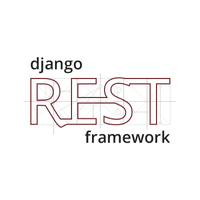Need advice about which tool to choose?Ask the StackShare community!
Flask vs asyncio: What are the differences?
Flask vs asyncio
Introduction: Flask and asyncio are both popular frameworks used in web development, but they have distinct differences that make them unique in their own ways. In this comparison, we will explore the key differences between Flask and asyncio.
Programming Paradigm: Flask is a synchronous framework that follows the traditional request-response cycle. It is built on top of the Werkzeug WSGI toolkit. On the other hand, asyncio is an asynchronous framework that allows for non-blocking I/O operations. It is based on an event loop and coroutines, making it ideal for high-performance applications that require concurrency.
Concurrency Model: Flask is single-threaded and relies on blocking I/O, which means it can only handle one request at a time. On the contrary, asyncio is designed for concurrency and can handle multiple requests simultaneously without blocking other tasks. This makes it more efficient in terms of handling multiple connections and enables better scalability.
Asynchronous Support: Flask does not have built-in support for asynchronous programming. It primarily follows a synchronous programming model, where code execution blocks until a response is received. In contrast, asyncio provides native support for asynchronous programming and allows developers to write non-blocking code using coroutines and async/await syntax.
Compatibility: Flask is compatible with both Python 2 and Python 3 versions. It has a larger community and a wide range of plugins and extensions available. On the other hand, asyncio is introduced in Python 3.4+ and is not backward compatible with Python 2. Though it has a growing community, the number of available libraries and plugins might be more limited compared to Flask.
Ease of Use: Flask is known for its simplicity and ease of use. It has a minimalistic design and focuses on making web development straightforward and intuitive. It is a great choice for beginners or small-scale projects. Conversely, asyncio has a steeper learning curve due to its asynchronous nature and the need to understand event loops and coroutines. It is better suited for experienced developers who require high-performance capabilities.
Application Type: Flask is commonly used for building traditional web applications and APIs. It provides easy routing, templating, and form handling features. On the other hand, asyncio is more suitable for building real-time applications, websockets, and other network-bound services that require high-performance I/O operations.
In summary, Flask is a synchronous framework that focuses on simplicity and is great for beginners or small projects, while asyncio is an asynchronous framework that enables high-performance, non-blocking I/O operations and is better suited for experienced developers who require concurrency and scalability.
My journey to developing REST APIs started with Flask Restful, and I've found it to be enough for the needs of my project back then. Now that I've started investing more time on personal projects, I've yet to decide if I should move to use Django for writing REST APIs. I often see job posts looking for Python+Django developers, but it's usually for full-stack developers. I'm primarily interested in Data Engineering, so most of my web projects are back end.
Should I continue with what I know (Flask) or move on to Django?
If you want to be a Web developer with knowledge in another frontend and NoSql technology, maybe continue with Flask. However, if you want to create very fast solutions to grow up with a new business and merge these with data analysis and other tools, Django is the answer. Basically read more about the service architecture where you feel more comfortable, Microservice or Monolithic, but please will not married with any because they solve issues to different contexts.
Which is the best Python framework for microservices?
We are using Nameko for building microservices in Python. The things we really like are dependency injection and the ease with which one can expose endpoints via RPC over RabbitMQ. We are planning to try a tool that helps us write polyglot microservices and nameko is not super compatible with it. Also, we are a bit worried about the not so good community support from nameko and looking for a python alternate to write microservices.
Bottle is much less bloated and fast. Its built-in templating system is one of the fastest as it compiles the templates in bytecode. Also Bottle has no depenencies, preventing dependency bloat.
I have just started learning Python 3 weeks ago. I want to create a REST API using python. The API will be used to save form data in an Oracle database. The front end is using AngularJS 8 with Angular Material. In python, there are so many frameworks to develop REST APIs.
I am looking for some suggestions which REST framework to choose?
Here are some features I am looking for:
Easy integration and unit testing, like in Angular. We just want to run a command.
Code packaging, like in java maven project we can build and package. I am looking for something which I can push in as an artifact and deploy whole code as a package.
Support for swagger/ OpenAPI
Support for JSON Web Token
Support for test case coverage report
Framework can have features included or can be available by extension. Also, you can suggest a framework other than the ones I have mentioned.
For starters flask provides a beautiful and easy way to create REST APIs. Also its supported by excellent beginner docs as well as a very active community. Another good thing with Flask is its widely available list of plugins which allow you to build as you go. Its also good in performance and can scale to a quite decent level. However, if you are sure your project is going to be fairly big, it would be better to start with Django as it provides a lot of features out of the box and is extremely stable in performance. Both these frameworks have support for Swagger, JWT, Coverage Report although you have to install plugins for them. Deploying both of these are fairly simple and there is huge documentation available. Django has one of the best documentations I have come across. I hope I was able to answer your queries.
Pros of asyncio
- Cooperative Multitasking4
- I/O Wait4
- Network Call3
- I/O bound computation2
Pros of Flask
- For it flexibility10
- Flexibilty and easy to use9
- User friendly7
- Secured6
- Unopinionated5
- Secure2
- Customizable2
- Simple to use1
- Powerful1
- Rapid development1
- Flask1
- Easy to get started1
- Easy to develop and maintain applications1
- Easy to setup and get it going1
- Easy to use1
- Documentation1
- Beautiful code1
- Orm1
- Not JS1
- Perfect for small to large projects with superb docs.1
- Easy to integrate1
- Speed1
- Get started quickly1
- Python1
- Minimal1
- Lightweight1
- Flexibilty0
- Well designed0
- Productive0
- Awesome0
- Open source0
- Expressive0
- Love it0
Sign up to add or upvote prosMake informed product decisions
Cons of asyncio
Cons of Flask
- Not JS10
- Context7
- Not fast5
- Don't has many module as in spring1





































